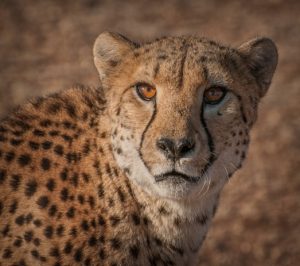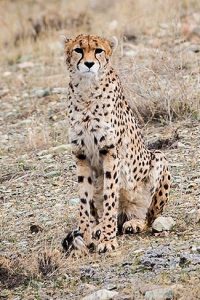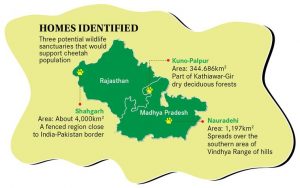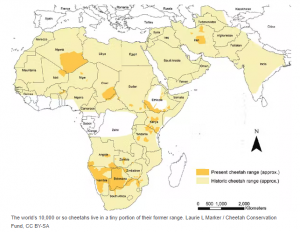DAILY CURRENT AFFAIRS (MAY 05, 2022)
THE SOCIETY, ART, AND CULTURE
1. IN 2020, LADAKH RECORDED THE HIGHEST SEX RATIO IN THE COUNTRY, MANIPUR LOWEST
THE CONTEXT: The Union Territory of Ladakh recorded the highest sex ratio at birth in the country in 2020, followed by Arunachal Pradesh, Andaman and Nicobar Islands, Tripura and Kerala, according to the annual report on Vital Statistics based on 2020 Civil Registration System report.
THE EXPLANATION:
- Highest Sex Ratio at Birth (SRB) based on registered events has been reported by Ladakh (1104) followed by Arunachal Pradesh (1011), A&N Islands (984), Tripura (974), and Kerala (969)
- Lowest sex ratio at birth was reported by Manipur (880), followed by Dadra and Nagar Haveli and Daman and Diu (898), Gujarat (909), Haryana (916) and Madhya Pradesh (921).
- In 2019, the highest sex ratio at birth was reported by Arunachal Pradesh (1024), followed by Nagaland (1001), Mizoram (975) and A&N Islands (965), and the lowest sex ratio was reported by Gujarat (901), Assam (903), Madhya Pradesh (905) and Jammu & Kashmir (909).
OTHER DETAILS
No data from 4 States
- The report said that the requisite information from Maharashtra, Sikkim, Uttar Pradesh and Delhi on sex ratio at birth was “not available.” They had not provided the said data to the RGI in 2019 as well.
- None of the States or Union Territories have recorded sex ratio at birth below 880.
Infant deaths
- The report noted that 1,43,379 infant deaths were registered in 2020 and the share of rural area was only 23.4%, while that of urban area was 76.6% in total registered infant deaths.
- Sex ratio at birth is number of females per thousand males.
2. THE DEBATE ON THE NATIONAL LANGUAGE
THE CONTEXT: The people of Karnataka celebrated Eid Ul Fitr and Basava Jayanthi together with peace and harmony. The day was celebrated as the ‘Harmony Day’.
THE EXPLANATION:
- In 2022, Eid and Basava Jayanti, both fell on the same day with several people across the state celebrating the festivals together, including in the North Karnataka region.
- Members of Both communities came together to celebrate the festivals as “Harmony Day” and the event also marked the beginning of a new organization that aims to counter the divisive forces.
- After floral tributes to the portrait of 12th-century social reformer Basavanna (Basaveshwara), the speakers said communal harmony and peaceful co-existence was the essence of India.
BASAVA JAYANTI
- Basava Jayanti is a Hindu festival celebrated by Lingayats in Karnataka, and other parts of south India to mark the birth anniversary of Lord Basavanna.
- Basavanna, a 12th century poet and philosopher, is celebrated and held in high regard, especially by the Lingayat community, as he was the founder of Lingayatism.
- As per the Hindu calendar, the birth of Basavanna falls on the 3rd day of Vaisahaka month in the Shukla paksha. This usually falls either in April of May of the English calendar.
CONTRIBUTION OF BASAVESHWARA
- Basaveshwara is known to have brought about several social reforms.
- He believed in a society free of the caste system, with equal opportunity for all and preached about manual hard work.
- He founded the Anubhava Mantapa, loosely translated as the forum of experiences, an academy that included Lingayat mystics, saints, and philosophers.
- These academicians and philosophers would congregate and share experiences and wisdoms of life.
THE SOCIAL ISSUE AND SOCIAL JUSTICE
3. 40 MILLION MORE PEOPLE EXPERIENCED FOOD INSECURITY IN 2021 THAN 2020
THE CONTEXT: Some 40 million more people globally experienced acute food insecurity at crisis or worse levels in 2021 than 2020, according to a new report released May 4, 2022.
THE EXPLANATION:
- Of these, over half a million people (570,000) in Ethiopia, southern Madagascar, South Sudan and Yemen were classified in the most severe phase of acute food insecurity.
- The report showed that around 193 million people in 53 countries or territories experienced acute food insecurity at crisis or worse levels in 2021.
CAUSES OF SUCH SCENARIO
- The Russian invasion of Ukraine- it found that conflict forced 139 million people in 24 countries/territories into acute food insecurity. This is an increase from 99 million in 23 countries/territories in 2020.
- Weather extremes- which forced over 23 million people in eight countries/territories into acute food insecurity, up from 15.7 million in 15 countries/territories in 2020.
- Economic shocks- Over 30 million people in 21 countries/territories suffered acute food insecurity in 2021 due to economic shocks, down from over 40 million people in 17 countries/territories in 2020.
SOLUTIONS
- The need for a greater prioritisation of smallholder agriculture as a front line humanitarian response, to overcome access constraints and as a solution for reverting negative long-term trends
- Urgent action is required to avert widespread collapse of livelihoods, starvation and death for these half a million, according to the report by the Global Network Against Food Crises (GNAFC).
- The GNAFC is an international alliance of the United Nations, the European Union, governmental and non-governmental agencies working to tackle food crises together.
THE ECONOMIC DEVELOPMENT
4. RBI RAISES KEY REPO RATE BY 40 BPS IN OFF-CYCLE MOVE
THE CONTEXT: In a surprise move, the Monetary Policy Committee (MPC) of the Reserve Bank of India (RBI) decided to increase the repo rate by 40 basis points (bps) in an off-cycle meeting, citing inflation concern.
THE EXPLANATION:
- This was followed by a 50 bps hike in the cash reserve ratio to 4.5 per cent, which will drain out Rs 87,000 crore liquidity from the banking system.
- This was the first repo rate hike in 45 months — since August 2018. The increase in the repo rate will lead to lending rates getting pushed up because 40 per cent of the loans of commercial banks are linked to it.
- The 10-year government bond shot up 26 bps, with the street expecting another rate hike in the June policy. As a result, the standing deposit facility (SDF) rate is now at 4.15 per cent and the marginal standing facility (MSF) rate at 4.65 per cent.
- The SDF and MSF constitute the lower and the upper end of the interest rate corridor. While hiking the repo rate, the MPC decided to stay “accommodative” but dropped the word “stance” from its resolution — for the second meeting in a row.

- The hike in the cash reserve ratio (CRR) is in line with the central bank’s objective to drain out excessive liquidity, which is around Rs 7 trillion.
- Banks do not earn any interest on keeping CRR money with the RBI. Bankers said the hike in the repo rate, which would increase lending rates, would more than compensate for the high CRR.
5. BIHAR BOASTS OF INDIA’S FIRST GREENFIELD GRAIN-BASED ETHANOL PLANT
THE CONTEXT: Bihar has the distinction of being the first state in the country to set up a greenfield grain-based ethanol production plant.
THE EXPLANATION:
- Spread over an area of 15 acres and estimated cost of about Rs.105 crore, the Purnia plant is expected to produce 65,000 litres of ethanol per day.
- This is first ethanol production plant in Purnia district. This is among the 17 ethanol units proposed to be set up in the state.
- According to the Bihar industries department officials, the 17 ethanol production plants will produce approximately 35.2 crore litres of fuel from sugarcane, maize, rice and molasses every day, which will be subsequently supplied to oil marketing companies for blending into petrol and later diesel.
- After this plant, the state will be able to sell its agricultural produce at the actual price fixed by the government.
THE DISASTER MANAGEMENT
6. INTERNATIONAL CONFERENCE ON DISASTER RESILIENT INFRASTRUCTURE
THE CONTEXT: The Prime Minister, Shri Narendra Modi addressed the inaugural session of the fourth edition of the International Conference on Disaster Resilient Infrastructure.
THE EXPLANATION:
Highlights of PM speech
- The gathering that the solemn promise of the Sustainable Development Goals is to leave no one behind.
- Infrastructure is about people and providing them high quality, dependable, and sustainable services in an equitable manner.
- The importance of infrastructure in unleashing the human potential and damage to infrastructure leads to lasting damage for generations.
- India is tackling climate change in a very direct way. That is why, at COP-26 India has committed to attain ‘Net Zero’ by 2070, in parallel with its developmental efforts.
- In order to make our future resilient world have to work towards a ‘Resilient Infrastructure Transition’. Resilient infrastructure can also be the centre piece of our wider adaptation efforts.
What is Disaster Resilient Infrastructure?
- As the name implies, disaster-resilient infrastructure include vital buildings, public communal facilities, transit systems, telecommunications, and power systems that are strategically designed to withstand the impact of a natural disaster like a flood, earthquake, or wildfire.
- Communities building resilient infrastructure in their city or town need to analyze the risk of potential natural disasters, consider which architectural improvements will be most beneficial in their community, and consider a budget and timeline for implementing said improvements.
- Disaster resilient architecture is one of the pivotal aspects of risk management and disaster preparedness.
THE PRELIMS PRACTICE QUESTIONS
QUESTION OF THE DAY
Q. Which of the following statements is/are correct about the Lord Basavanna?
- He was the founder of Lingayatism.
- He was in favour of caste system.
Select the correct answer using the code given below:
a) 1 only
b) 2 only
c) Both 1 and 2
d) Neither 1 nor 2
ANSWER FOR 3rd & 4th MAY 2022
Answer: B
Explanation:
- Statement 1 is incorrect: If the bill after reconsideration is passed again by the state legislature with or without amendments, the governor has to give his assent to the bill.
- Statement 2 is correct: Constitution does not lay down any time frame for the Governor to take action on the bill passed by the state legislature.



